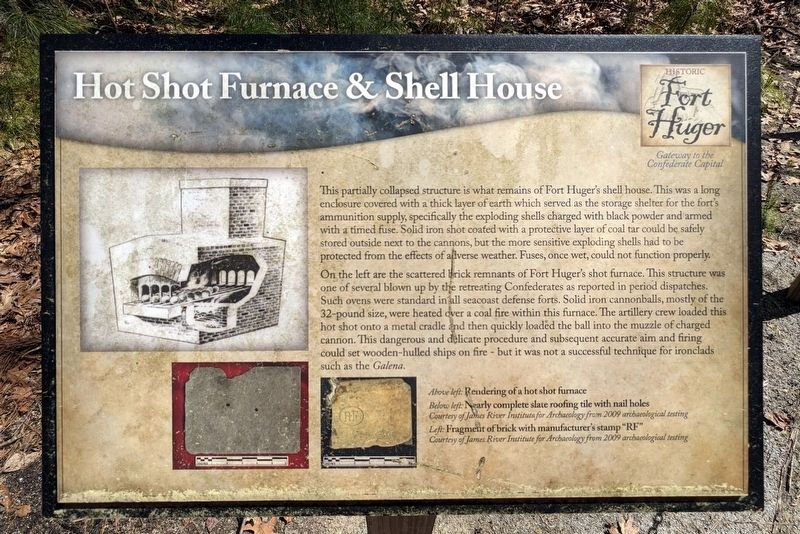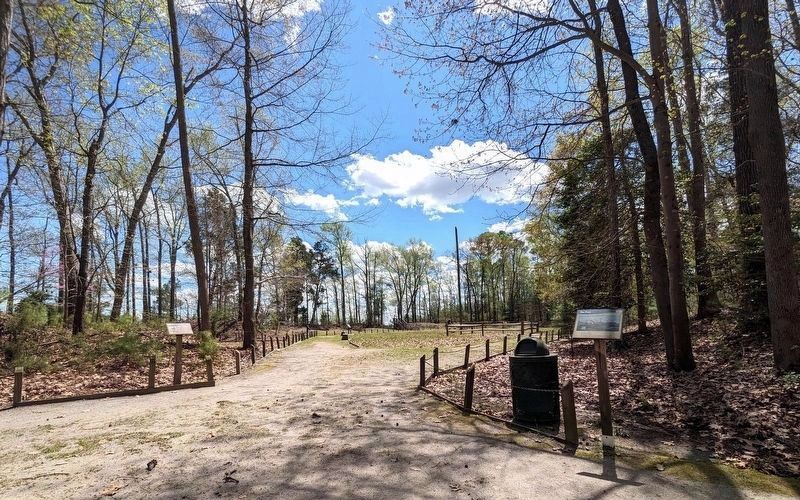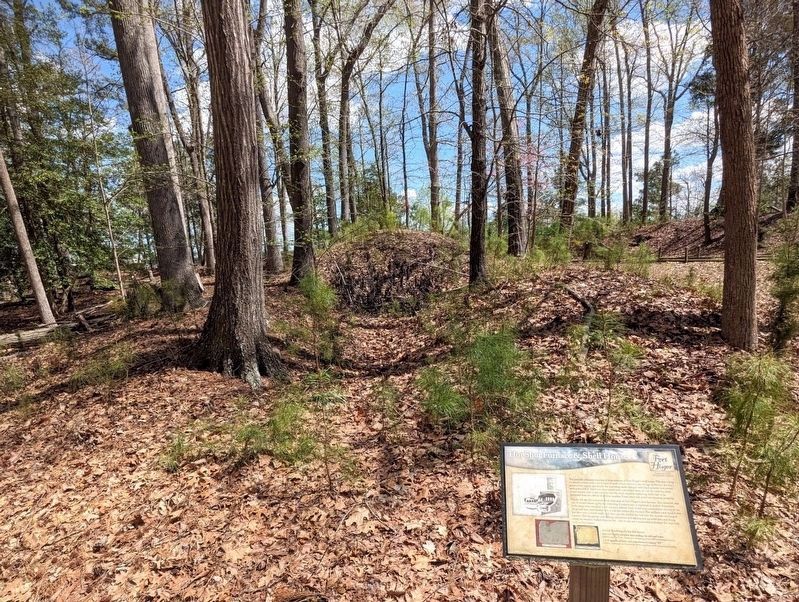Smithfield in Isle of Wight County, Virginia — The American South (Mid-Atlantic)
Hot Shot Furnace & Shell House
Gateway to the Confederate Capital
— Historic Fort Huger —
On the left are the scattered brick remnants of Fort Huger's shot furnace. This structure was one of several blown up by the retreating Confederates as reported in period dispatches. Such ovens were standard in all seacoast defense forts. Solid iron cannonballs, mostly of the 32-pound size, were heated over a coal fire within this furnace. The artillery crew loaded this hot shot onto a metal cradle and then quickly loaded the ball into the muzzle of charged cannon. This dangerous and delicate procedure and subsequent accurate aim and firing could set wooden-hulled ships on fire - but it was not a successful technique for ironclads such as the Galena. (captions)
Above left: Rendering of a hot shot furnace Below left: Nearly complete slate roofing tile with nail holes Courtesy of James River Institute for Archaeology from 2009 archaeological testing
Left: Fragment of brick with manufacturer's stamp "RF"Courtesy of James River Institute for Archaeology from 2009 archaeological testing
Erected by Isle of Wight County.
Topics. This historical marker is listed in these topic lists: Anthropology & Archaeology • Forts and Castles • War, US Civil.
Location. 37° 6.586′ N, 76° 39.473′ W. Marker is in Smithfield, Virginia, in Isle of Wight County. Marker can be reached from the intersection of Talcott Terrace and Lawnes Neck Drive, on the right when traveling east. Touch for map. Marker is at or near this postal address: 15080 Talcott Ter, Smithfield VA 23430, United States of America. Touch for directions.
Other nearby markers. At least 8 other markers are within walking distance of this marker. The Fort (a few steps from this marker); Powder Magazine (within shouting distance of this marker); North Bastion (within shouting distance of this marker); The Historic James and its Tributaries (within shouting distance of this marker); Fort Architecture (within shouting distance of this marker); African Americans at Fort Huger (within shouting distance of this marker);
Fort Entrance & Defense (within shouting distance of this marker); South Bastion (about 300 feet away, measured in a direct line). Touch for a list and map of all markers in Smithfield.
Also see . . . Fort Huger. Isle of Wight County Museum (Submitted on April 6, 2024.)
Credits. This page was last revised on April 7, 2024. It was originally submitted on April 5, 2024, by Bernard Fisher of Richmond, Virginia. This page has been viewed 51 times since then. Photos: 1. submitted on April 5, 2024, by Bernard Fisher of Richmond, Virginia. 2, 3. submitted on April 6, 2024, by Bernard Fisher of Richmond, Virginia.


